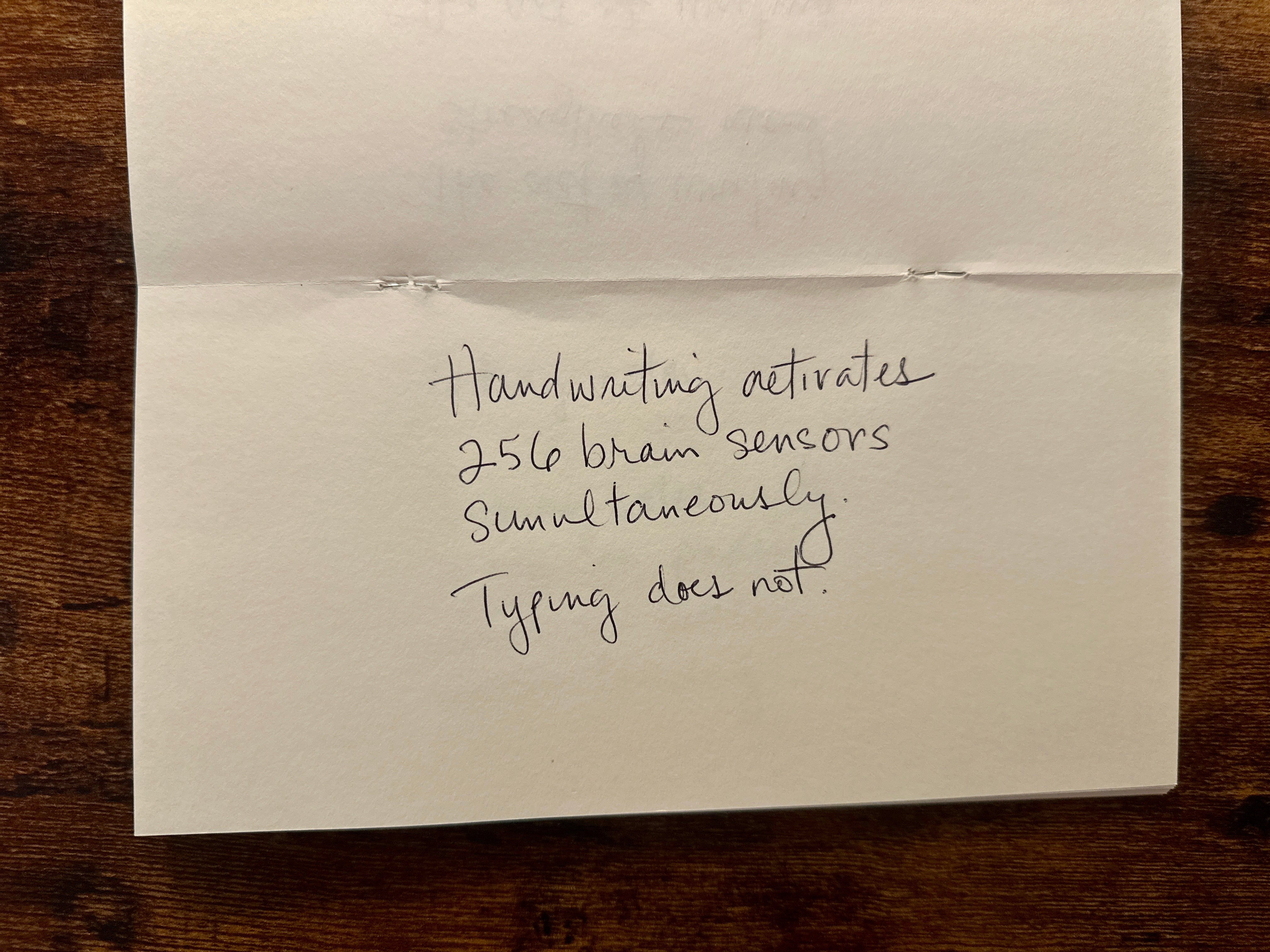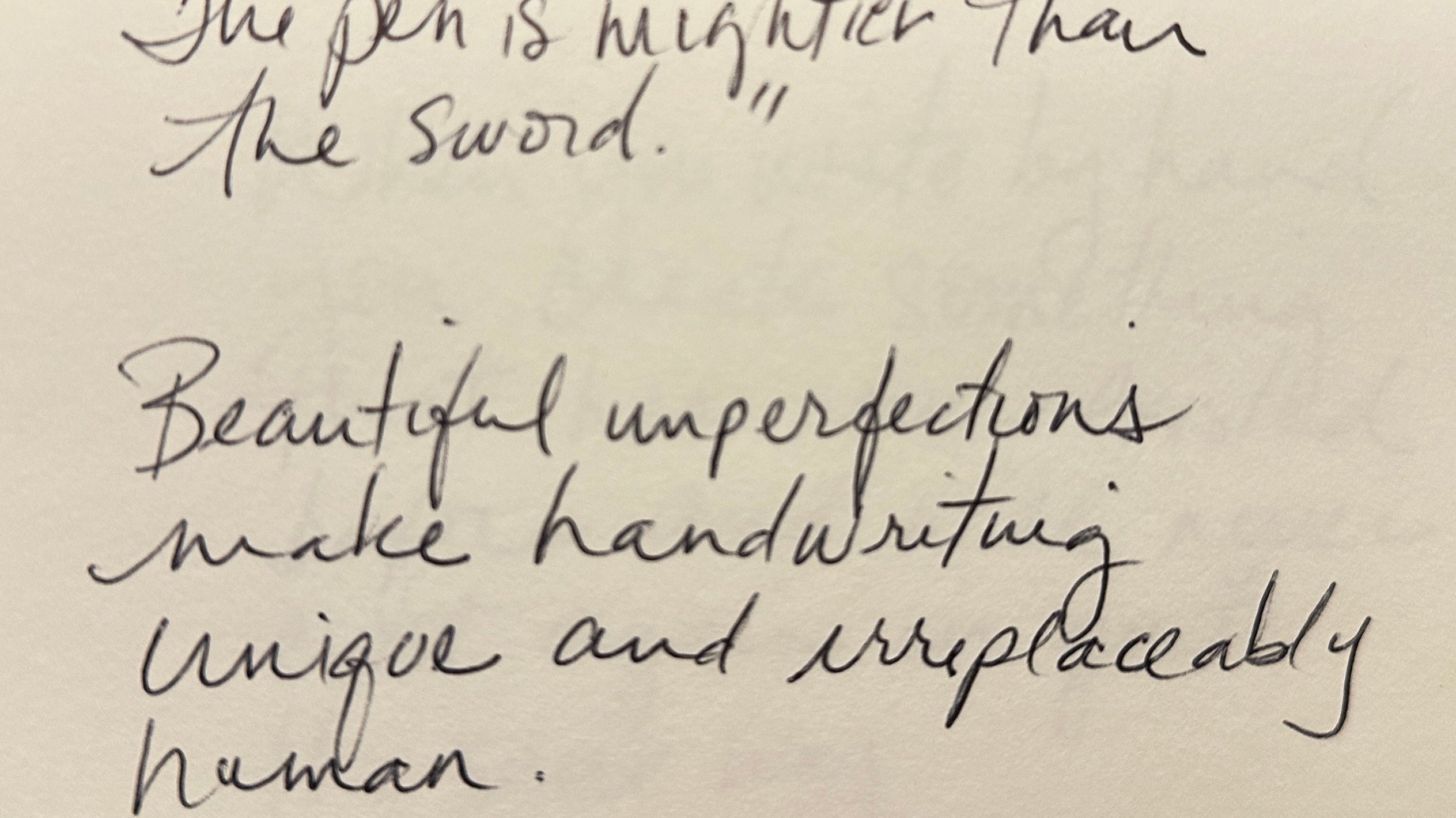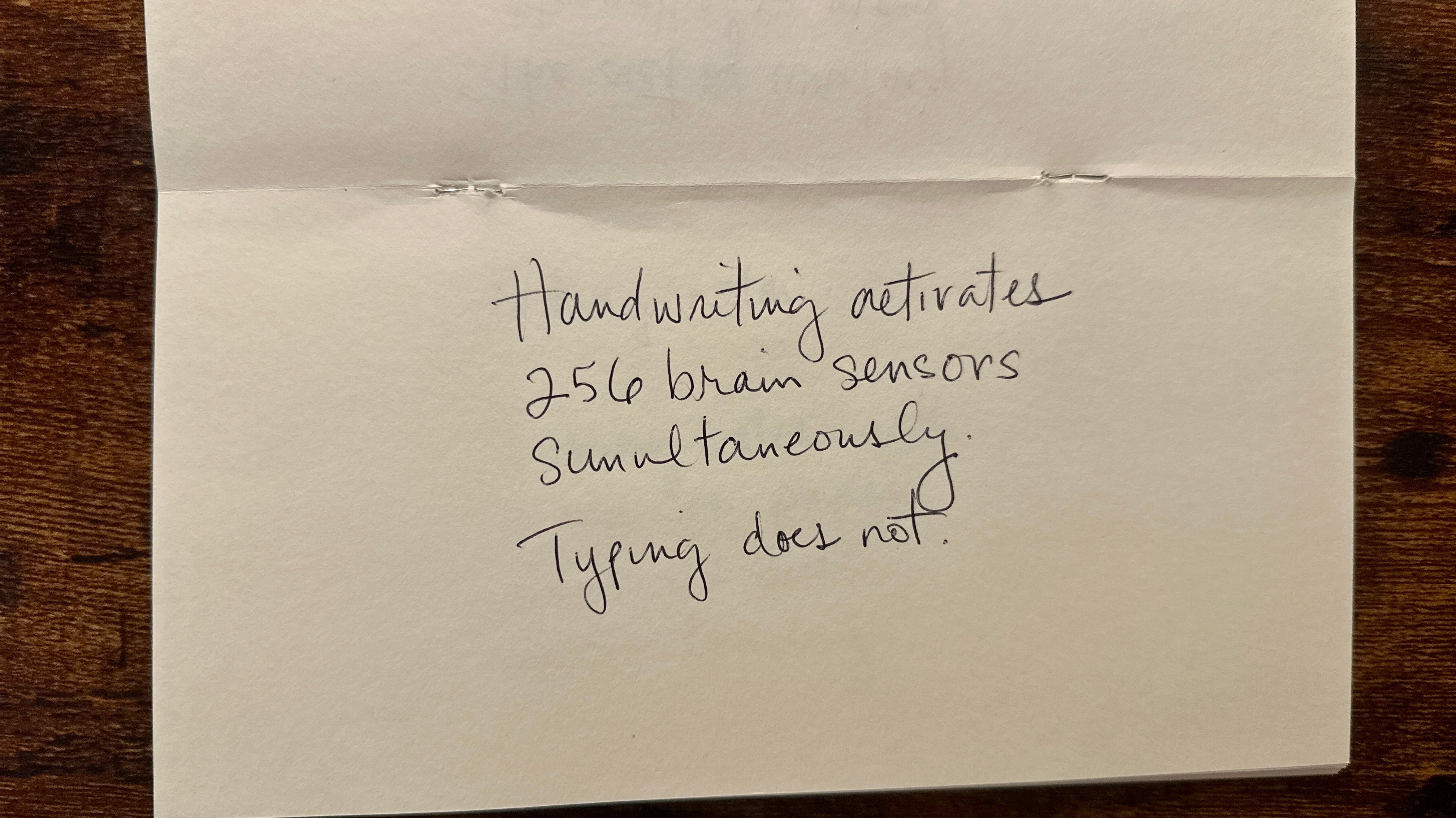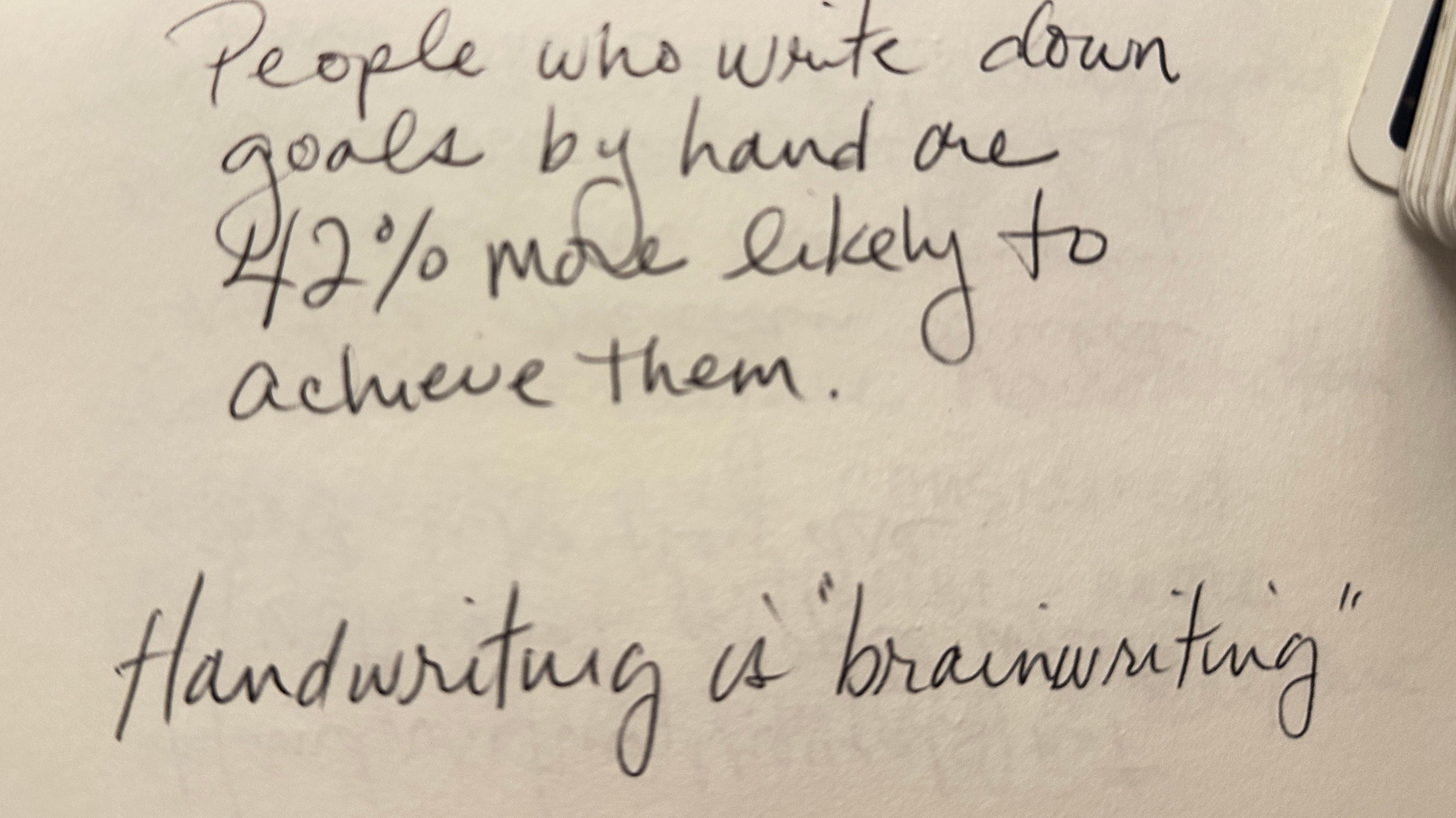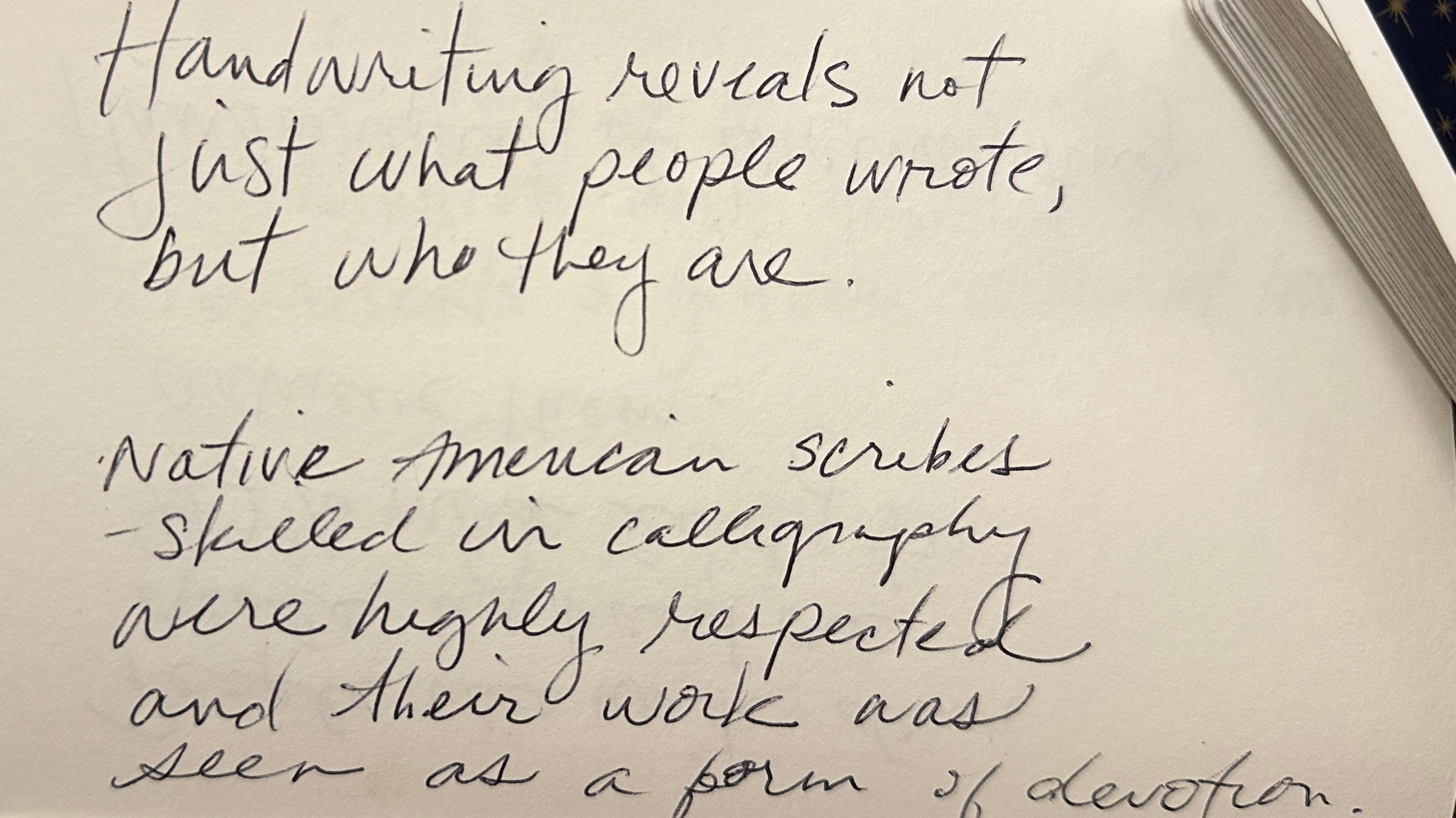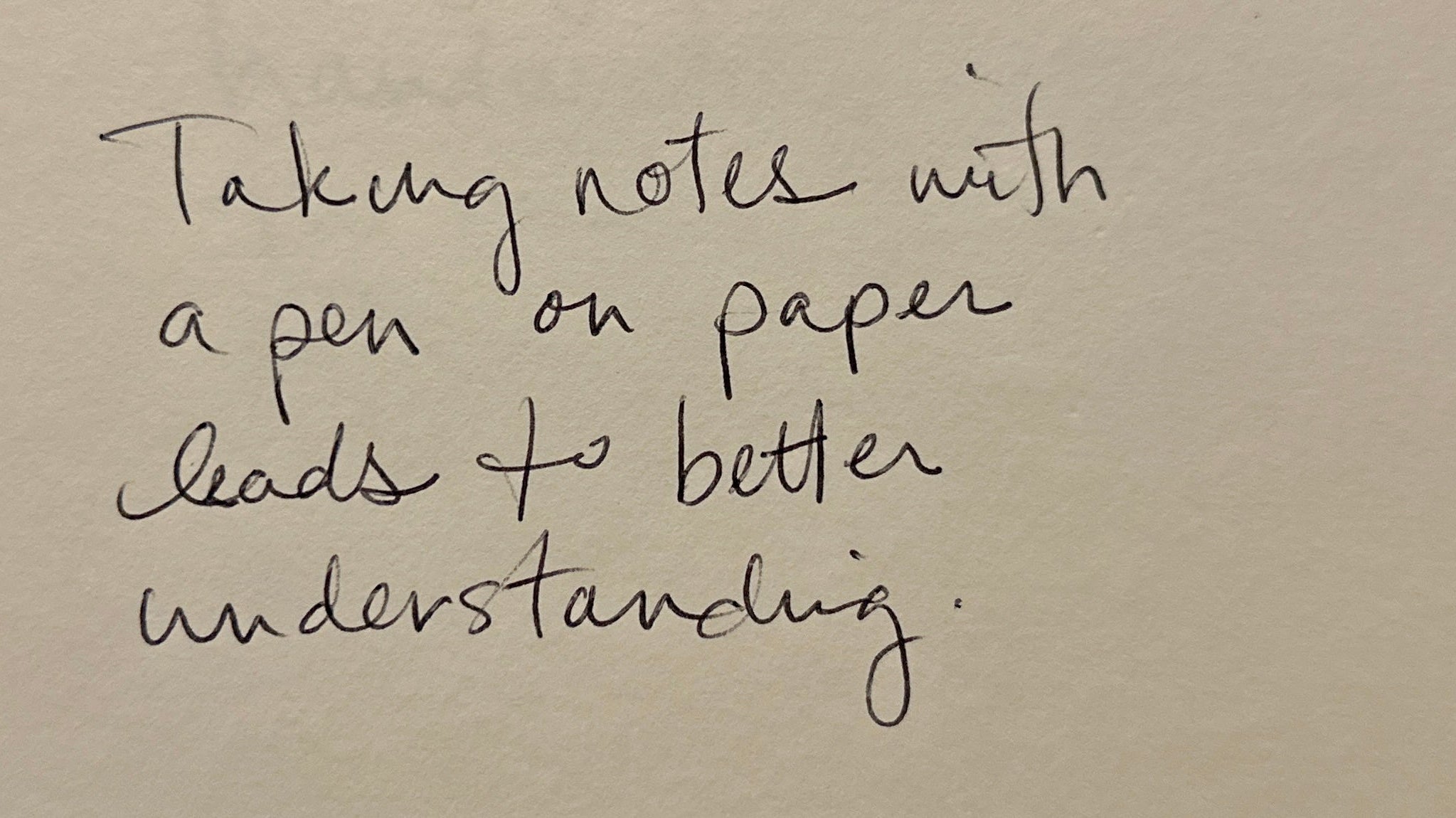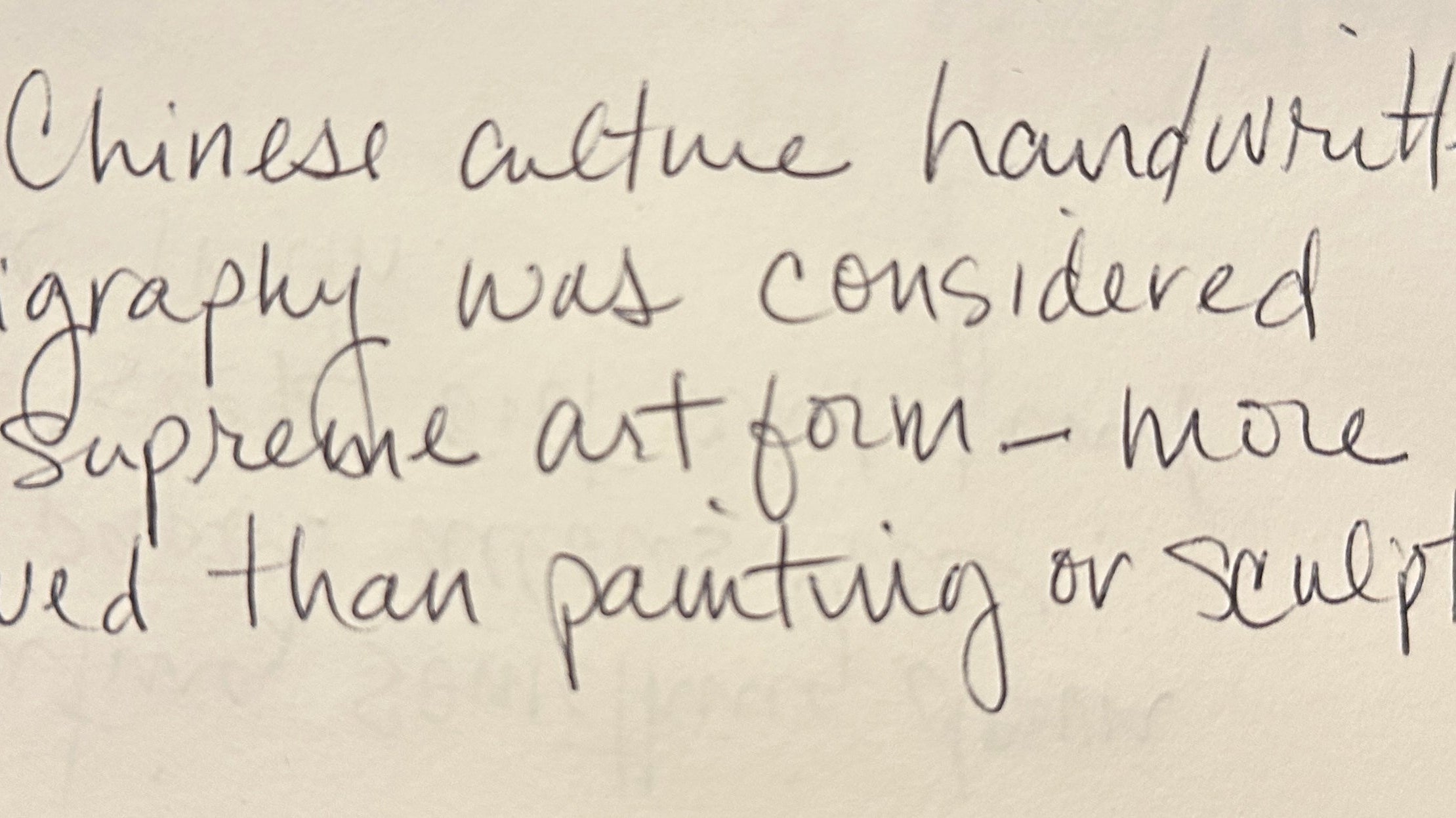Handwriting activates 256 brain sensors simultaneously, creating complex connectivity patterns that typing cannot replicate Handwriting Boosts Brain Connectivity and Learning - Neuroscience News
"Handwriting but not typewriting leads to widespread brain connectivity: a high-density EEG study" (Frontiers in Psychology, 2024) This groundbreaking study used 256-channel EEG to monitor brain activity in 36 university students. Results showed that handwriting creates far more elaborate brain connectivity patterns than typing, with widespread theta/alpha connectivity between network hubs in parietal and central brain regions. These frequency patterns are crucial for memory formation and encoding. FrontiersPubMed Central
"The Neuroscience Behind Writing: Handwriting vs. Typing" (2024) This comprehensive review found that handwriting activates a broader network of brain regions involved in motor, sensory, and cognitive processing compared to typing. Handwriting leads to increased theta band synchronization linked to cognitive processing and memory consolidation, while typing engages fewer neural circuits resulting in more passive cognitive engagement. PubMed CentralMDPI
"The effects of handwriting experience on functional brain development in pre-literate children" (Trends in Neuroscience Education) This study with five-year-old children showed that only free-form handwriting (not typing or tracing) activated the brain's "reading circuit" during letter perception. Handwriting experience resulted in recruitment of letter-specific neural processing regions important for setting up the neural system responsible for literacy. The effects of handwriting experience on functional brain development in pre-literate children - PMC

